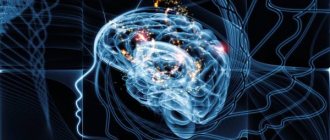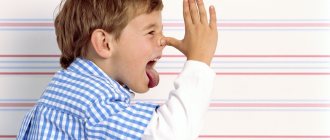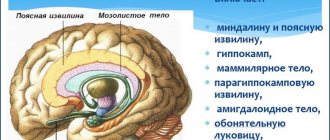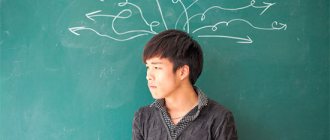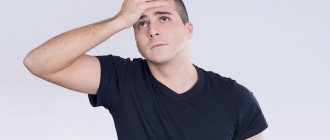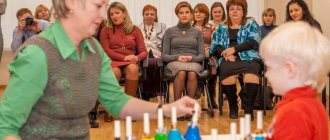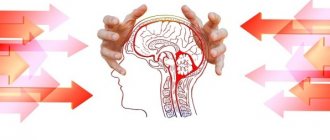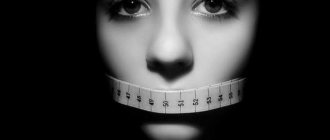Autism is a general developmental disorder and typically manifests itself during the first three years of a child’s life. Very often we hear about childhood autism or early childhood autism. It is worth remembering, however, that children diagnosed on the autism spectrum become adults with autism. Children who exhibit symptoms of autism at the age of 5-6 years are diagnosed with autistic autism.
However, in adults who behave strangely and have problems in social relationships, psychiatrists are very reluctant to recognize autism. The problems of adults, despite the lack of relevant research on autism, are trying to justify it differently and look for a different diagnosis. Autistic adults are often considered eccentrics, people with an unusual type of thinking.
Reasons for the development of the disease
In recent years, there has been an increase in the incidence of autism. However, the trend has no scientific explanation. The disease can be caused by a number of factors. One of them is the toxic effect on the mother’s body during pregnancy. Common causes of autism in children:
- complications after colds;
- infectious lesions of the brain, abnormal development of its individual parts;
- cerebral palsy;
- hormonal imbalance;
- effects on the body of viruses and bacteria;
- uncontrolled use of antibacterial drugs;
- unsuccessful vaccination.
Genetic factors play a certain role in the development of autism.
Autistic children do not have external disabilities and are physically developed. The structure of the brain in infants is no different from the brain of healthy children.
Autistic children do not have external disabilities and are physically developed.
Despite the fact that medicine has stepped forward by an order of magnitude, scientists cannot name the main causes of autism. There is only an assumption that the disease is a consequence of a violation of brain structures.
Another reason doctors call complications during intrauterine development. Factors that increase the risk of having a child with autism are:
- infectious processes of a viral nature occurring in utero;
- toxemia;
- uterine bleeding;
- childbirth ahead of schedule.
The disease is often hereditary. If someone in the family line had this diagnosis, the probability of recurrence of the disease in a future generation reaches 10%.
Autism occurs more often in children whose relatives had mental disorders:
- detachment from reality;
- difficulties in speech perception;
- speech dysfunction;
- disorder of the volitional sphere;
- tendency to be withdrawn;
- incorrect perception of reality.
What is autism and how does it manifest itself? How to cure autism in adults and children, we will consider the main symptoms and treatment of the disease in more detail.
How and when does the disease manifest in children?
Like any other disease, autism has its own symptoms. Among the main signs of this pathology are:
- difficulties of social adaptation;
- communication problems;
- tendency towards ritualism in behavior;
- narrowness of interests;
- isolation.
Autistic people also have the following characteristics:
- poor ability to concentrate;
- photophobia;
- reaction to a loud sound;
- motor impairment;
- difficulties with perception of information and learning.
Autistic people with any form of the disorder spend their entire lives away from society. Establishing social contacts is difficult for them; in addition, with this diagnosis, patients do not feel the need for it.
Autism is also considered a congenital disorder. For truly sick people, communication with other people is of no interest. The phenomenon of this disease is explained by the tendency of autistic people to lead an antisocial life. In childhood, they begin to talk quite late. In this case, the reason lies not in poor mental development or any physical abnormalities, but in the lack of motivation for communication.
Autistic people have an increased need for stability and consistency. Their actions have a strong resemblance to ritualism. This manifests itself in maintaining a certain daily routine, addiction to the same habits and systematization of things and personal items. In medical terminology, there is a definition of “diet for autism.”
The tendency to repeat the same actions sometimes leads to an idealization of the result, the perfection of which is determined by the level of the patient’s mental abilities. Most autistic adults suffer from disabilities and have low IQ levels. In this situation, they will not become virtuosos in the game of chess. At best, their main entertainment will remain children's construction sets.
A mild form of autism presupposes the possibility of maximum adaptation in society. Having matured, such patients have every chance of getting a job that requires repetition of the same type of actions without the need for advanced training.
Psychiatrists identify defining behavioral features in autistic children. The main ones:
- disruption of contacts in society;
- limitation of interests and behavior during games;
- frequent repetition of the same type of actions;
- violation of speech and emotional communication;
- intellectual disorders;
- features of body movements;
- weakening sense of self-preservation.
The symptoms of the disease are very diverse and depend on the age category of the patient.
Scientists, when examining patients with this diagnosis, identified significant disturbances in:
- Frontal parts of the cerebral cortex.
- Hippocampus.
- Median temporal lobe.
- Cerebellum.
Particular attention was paid to the size of the cerebellum - in autistic people it is smaller than in healthy people. This is probably why autistic people find it difficult to switch their attention. Autism, which causes indignation among doctors, refers to changes in the cerebral cortex and its parts.
The cerebellum is responsible for:
- coordination of movements;
- speech;
- attention;
- thinking process;
- emotional sphere;
- learning ability.
Disorder and disruption of these aspects are the main symptoms of autism.
With disorders in the amygdala, medial temporal lobes and hippocampus, a person experiences disorders such as:
- dulling of memory;
- emotion disorder;
- slow-wittedness;
- lack of need to communicate with others;
- indifference to what is happening;
- learning difficulties.
Symptoms of autism in infancy are very difficult to diagnose. Diagnosis of the disease is difficult until the child has developed basic skills in self-care, communication and worldview.
With functional disorders of the brain, changes are noticeable during an EEG. At the same time, patients with autism are characterized by:
- In memory.
- Attention.
- Verbal thinking function.
- Speech aspect.
An EEG is not a method of treating autism; it is just one of the diagnostic measures used to identify functional disorders occurring in parts of the brain.
Depending on the course and degree of impairment of brain and psychoemotional activity, autism is divided into several groups, each of which is characterized by certain personality changes.
All types of diseases are not only genetic disorders, but can also be acquired.
The danger of an acquired disease lies in the absence of pronounced symptoms of autism. The slow progression leads to the patient becoming withdrawn overnight and trying to isolate himself from others.
At the initial stages of the development of the disease, a person stops enjoying life, falls into deep depression, and communication during a meeting is reduced to minimal fragments of phrases. At work or in family relationships, conflicts arise that force the patient to hide from others, plunging into the abyss of his experiences and suffering.
Autism can be detected and diagnosed by the age of 3, but, as medical statistics show, this disease can manifest itself already in the first year of a child’s life.
You can recognize early signs of autism in a child by the following symptoms:
- underdevelopment of speech aspects: under the age of one year, babies do not utter sounds; addressing parents is limited to mooing or gestures. Upon reaching the age of three, children do not speak in sentences, only occasionally uttering barely intelligible words;
- lack of mother-child interaction. The child does not show any feelings or emotions;
- a noticeable lag in development, both intellectual and physical;
- the baby prefers to play alone, ignoring his peers on the street. Any attempt by another child to approach the autistic person causes hysterics;
- the inability to distinguish animate from inanimate, round from square;
- craving for a certain toy or object, role-playing games do not cause an emotional outburst;
- unpredictable reaction to loud sound, bright light;
- aggressiveness, both towards others and towards oneself. The child may scratch or bite himself.
If there are signs of illness, it is imperative to show the baby to a psychiatrist or neurologist. Of course, some of the manifestations listed above are not signs of illness, but may be a means of self-expression or rebellion of the child. But it never hurts to play it safe.
World Autism Awareness Day has been celebrated since 2007, but to this day there is very little information about this. Experts agree on one thing - the earlier a child is diagnosed with this brain disorder, the greater the chance that he will be able to make friends with the world and live a full life.
So how to recognize autism at an early age? The most favorable scenario is to make a diagnosis at 1-2 years old, then it may already be too late. Parents often perceive self-obsession, reluctance to talk and communicate, and pathological love of order simply as a feature of character and development - they say, everything will improve with age.
However, the signs of autism in children can be very different, and there are dangerous signals when you need to immediately run to a neurologist and pediatrician:
- if the baby does not look into the eyes and does not respond to the parent’s voice;
- speaks about himself only in the third person and does not say his name or age;
- spends hours rocking on a chair, waving his arms, opening and closing the door;
- looks at the same picture, scrolls through the same cartoon;
- constantly arranges his toys by color, shape, etc.
Treatment of autistic conditions
Treating autism is a complex and difficult process. Such therapy is exhausting; it exhausts the child’s body morally and physically.
Treating autism is a complex and lengthy process.
Parents of the baby should mentally prepare for lengthy and not always successful procedures.
The main rules that parents need to follow are the following recommendations:
Treatment for a little autistic child takes place always and everywhere: in the garden, on the street, at school, at the clinic, at a party. Therapy will consist of regular, persistent repetition of certain phrases to reinforce certain skills. Even when the baby remembers the rule, he will have to return to it many times to consolidate it in his consciousness. The parents will have a joint visit to a psychologist. After all, long-term therapy negatively affects the condition of the relatives themselves.
It is very important for parents to be able to find time for their own rest and recuperation. A difficult, many-year struggle lies ahead for the socialization of the baby.
Try to find a highly qualified specialist in the field of psychiatry. Only experienced doctors can rehabilitate such a child. For the baby, the only choice of the attending physician is important - changing the person will not benefit him, but will only worsen the condition. The main treatment for autism is carried out according to an individually developed method, which parents must strictly follow. Pets with calm dispositions benefit greatly from therapy. Visits to the dolphinarium, hippodrome, and petting zoo help. Find similar parents within the city. Communication with people who are in a similar situation gives strength and energy to fight the disease. Establish a strict daily routine for your baby and try not to change it. Never raise your voice at the child, often call him by name - try to master and subjugate his attention. Do not change your baby’s usual home environment
And don’t expect a positive result in a week, a month, even a year. Treatment for autism continues throughout a person's life. Some children already after 3-4 months delight their loved ones with obvious changes - they begin to make contact. And for others, positive dynamics are not observed even after decades.
Pay attention to your baby's behavior, and if there are any alarming symptoms, consult a doctor. Even the slightest disturbances in speech and motor skills should be the reason for visiting him.
In this case, it is better to be safe than sorry later.
Types of disease
There are no two identical autistic people in the world - this specificity of the disease has been known for a long time. The symptoms of autism in adults, as well as in children, are very individual, and in many respects they depend on the type of disease. These varieties are called autism spectrum disorders.
- Kanner syndrome
This is the most severe form, which is practically impossible to correct. A person with Kanner syndrome lives in his own world, which he has been building for many years. Here his rules and laws, and the patient perceives any attempt to invade or pull him out of his shell as a terrible threat.
- Asperger's syndrome
This is a mild form of the disease - such people are treatable, they have excellent intelligence, they fit well into society. But some problems with socialization remain forever. Someone doesn’t know how to read other people’s emotions, mood, is not able to listen and hear, someone makes only one friend and avoids other people all their life...
- Rett syndrome
This is an exclusively female variant - girls get it at the age of about one year, and then the situation only gets worse. You almost never see adult “Rhetts” - such patients die at the age of 25-30.
- Atypical autism
This category includes all non-standard cases of the disease. Often a child becomes ill with this form already in adolescence.
Classification of the disease
There are four types of autism:
- Kanner's syndrome. Its signs are a tendency to isolate from society, a poor vocabulary, and poor speech development.
- Asperger's syndrome is a mild form of autism that appears in children around the age of seven. Patients with this diagnosis have problems with intonation and volume of speech, coordination disorders, a tendency to focus on one activity or study of one subject, and categorical judgment. At the same time, they have a high level of intelligence and normal speech skills.
- Rett syndrome is a disease of the nervous system caused by abnormalities in the X chromosome. It develops in girls, since boys with a similar diagnosis die before they are born. It usually appears in the 8th month of a baby’s life. Characterized by deep autism. Symptoms of the disease are: underdeveloped speech, passivity, coordination disorders, slowed head growth, underdevelopment of the brain, problems with the skeletal and muscular system, signs of epilepsy, mental retardation. Such children can learn to speak only by the age of five or six. The disease is congenital and difficult to correct.
- Atypical autism is an acquired form that manifests itself in adults. The development of pathology is accompanied by brain damage. Characterized by severe speech and motor impairments.
In accordance with the modern classification, the disease is divided into groups:
- the first – patients who do not interact with the outside world;
- the second is reserved people who have a favorite hobby and are able to do it for hours. They may not sleep for a long time and not feel the need to eat;
- the third – patients who do not perceive social norms;
- fourth - adults who are unable to cope with problems, who have a tendency to be offended and blame others for their failures;
- the fifth are autistic people with a normal or high level of intelligence, who, regardless of the diagnosis, adapt to society.
Among the patients belonging to the fifth group there are many scientists, writers and musicians.
When classifying the disease, doctors distinguish the following types of autism, divided into 5 groups:
- Patients whose perception is difficult and interaction with the outside world is impaired.
- Patients who are particularly reclusive and capable of engaging in hobbies for a long time. The needs for sleep, food and rest are disrupted.
- Autistic people who do not support or accept the norms and rules established by society.
- Autistic adults who cannot cope with the most trivial problems on their own are touchy and whiny.
- Having autism syndrome, but at the same time the patients have high intellectual abilities. They have talent and passion for music, poetry, and programming. Such patients adapt quite easily to society.
Autism is a disease caused by a genetic disorder. By the term autism, people usually mean mental retardation, detachment and inaction of the patient. But, as practice shows, among people suffering from this disease there are a lot of brilliant individuals. Our society is accustomed to thinking that autistic means weak-minded. Being the object of constant ridicule from others, patients become isolated and suppress abilities that are not endowed with an ordinary person.
Adult autism differs from childhood manifestations of the disease. Autism often develops due to a person being depressed for a long time. Disconnection from reality and lack of desire to interact with the world lead to the development of acquired autism in adults.
Symptoms and signs of autism in children
Why are children born with Down syndrome, cerebral palsy, autistic disorders, and other incurable illnesses? These questions are asked by both scientists and parents of special children.
The causes of autism spectrum disorders range from poor environmental conditions to an accidental genetic failure. But how serious the symptoms will be in autistic adults depends primarily on how early the pathology was discovered and treatment began.
An accurate diagnosis can be made if a person has a combination of 3 main symptoms - problems with socialization, reluctance to communicate and a desire for rituals and monotonous actions. And specific signs can be very different:
- very sparing facial expressions and gestures (with the exception of repetitive movements);
- ritual actions (eating the same dishes, walking along the same route, putting things in a clear order);
- inability (and unwillingness) to understand the emotions and feelings of others;
- monotonous, emotionless speech (like a robot);
- small vocabulary and low intelligence;
- aggressiveness at the slightest changes in daily routine, etc.
Features of manifestation
The behavior of autistic people is characterized by stereotypical actions, such as nodding their heads or shoulders, waving their arms, convulsive movements, and swaying their torso. Many autistic people aged 20–25 years do not have basic self-care skills, which is why they need daily care.
Mental agitation, manifested by hyperreactivity or mannerisms, indicates the development of the disease. The patient is often aggressive, irritable, and cannot concentrate for long. There is an acute inappropriate reaction to touch, for example, a friendly greeting by the hand or a pat on the shoulder.
A disorder of emotional balance leads to patterned behavior and monotony in performing actions. An autistic person often does not understand the essence of being addressed and becomes indifferent to the feelings of others and everything that happens. Movements and facial expressions are uncertain and limited, and there are pronounced speech defects.
Is there a possibility of a cure?
Treatment of the disease called autism must begin in early childhood. In this situation, young patients have every chance of growing to independence. The fundamental factor for developing a treatment regimen is the root cause that provoked the development of the pathology. Research into this disease is still ongoing.
This phenomenon has not yet been fully understood. Today, the subject of active discussion is the theory of gene mutation. Medical professors and scientists have taken up this issue closely. During the research, they were able to identify genes that can affect the development of autism. But the reasons for the mutation process itself have not yet been determined.
The situation can be improved with the help of behavioral therapy and speech therapy sessions. Periodic visits to a psychotherapist are strongly recommended for autistic people throughout their lives.
In order to alleviate symptoms, patients are given drug therapy. In most cases, these are psychotropic drugs and drugs with an anticonvulsant spectrum of action. With their help, it is possible to temporarily correct the patient’s condition and minimize manifestations.
With the help of long-term complex therapy, it is possible to prevent the occurrence of attacks and significantly improve the patient’s quality of life. Today, many special programs and techniques are being developed aimed at the rehabilitation of autistic adults.
The basis of autism therapy is teaching children certain skills, developing correct social behavior, establishing emotional contact and communication with them, eliminating aggressiveness, obsessive thoughts and fears, and introducing them to games.
When working with a child, you may need the help of a psychologist and speech therapist. However, the main burden of such a diagnosis falls on the shoulders of the parents. Lifestyle correction for autistic people involves individual behavioral therapy.
Such children need to be provided with a daily routine and strictly adhere to it. They should not be scolded, punished often, nor should they be rushed and demand immediate results. It is forbidden to suddenly change the child’s usual environment or allow him to become overworked and tired. Between classes you should take breaks, allowing your child to be alone.
Drug therapy for autism is used as an auxiliary therapy. Aimed at eliminating aggression. It comes down to the prescription of psychostimulants and antipsychotics, the abuse of which can lead to aggravation of the situation.
Such children often develop dysbiosis, which can be eliminated with the help of probiotics. Babies may also be indicated for immunostimulating therapy, which involves the administration of immunoglobulin and steroids. If necessary, vitamin and mineral complexes are prescribed.
The manifestations of autism can be reduced by organizing nutrition, in which it is necessary to exclude milk, wheat, oats from the patient’s diet, and limit the consumption of sugar and carbohydrates.
Can autism be cured? The likelihood of a full recovery is reduced to zero, but the body can be helped. There are not many treatments for autism.
According to scientists, today, stem cell treatment for autism is widely used. This procedure helps to normalize reduced brain function, as well as stabilize the functioning of the nervous system. The advantage of this procedure is that the patient does not need to search for a donor, since he himself is one. Cells are taken from the umbilical cord of a newborn, having previously examined them for virus carriage.
Can autism be treated with stem cells? Scientists have different opinions. Some believe that this type of therapy helps reduce the main manifestations of the disease, others are of the opinion that the process of introducing one’s own cells into the body can be harmful and cause irreversible consequences.
Does the type of disease affect treatment tactics and when is a cured patient considered healthy? It is impossible to cure autism in adults; there is only drug therapy that reduces the risk of developing seizures and psychological disorders.
Treatment of the disease begins in childhood. With correct and proper treatment, the likelihood of developing independence in an autistic person increases significantly.
Among the medications the patient is prescribed:
- psychotropic drugs;
- anticonvulsants.
To facilitate the patient’s adaptation, the following types of psychological treatment are recommended:
- Behavioral.
- Speech therapy.
- Mastering self-care skills and behavior in society.
- Trainings and visits to a psychotherapist.
This type of therapy is applicable not only to children suffering from this disease, but also to adults who are deprived of the joy of life and are in a depressed state.
It is impossible to get rid of the disease; doctors tell this to all parents who are faced with such a disaster. But it is possible to correct and smooth out the symptoms, and this requires continuous and thorough treatment. Differential diagnosis is also very important here - sometimes specialists confuse the diagnosis of schizophrenia, cerebral palsy and autism.
Therapy for autism spectrum disorders requires comprehensive treatment. Today in Russia and all over the world a variety of techniques are used. And it is important to try as much as possible to understand what treatment helps your child, friend, loved one:
- medications (for the treatment of associated syndromes - depression, hyperactivity, attacks of aggression, seizures);
- communication with a psychotherapist;
- occupational therapy;
- behavioral techniques for developing communication skills;
- classes with a speech therapist;
- special techniques (massage, communication with animals, hypnosis).
But the most important thing is the continuous attention of loved ones, attempts to break through the wall that an autistic person builds around himself, to show him the world, to teach him how to communicate.
Statistics from the World Health Organization sternly state that every year the number of children living “in themselves” (this is how the disease is translated) grows by 13%, but famous people with autism made history years, decades and even centuries ago - historians, biographers and art historians are ready to name many legendary names.
- composer Wolfgang Amadeus Mozart;
- writers Virginia Woolf;
- poet Emily Dickinson;
- scientist Marie Curie;
- artist Vincent Van Gogh;
- physicist Albert Einstein.
Famous autistic people living in the world today are the creator of the legendary cartoon “Pokemon” Satoshi Tajiri, who invented “Ghostbusters” and played in it Dan Aykroyd, Ph.D. and writer Temple Grandin, football player Lionel Messi.
Autistic celebrities attract the most attention, but it is important to understand that most of them are not ordinary “sick people.” And savants are geniuses with autism spectrum disorders, of which there are only a few in the world.
In Europe and the USA, statistics on autistic children are kept very carefully - today in developed countries there is one child “within himself” for every 80-90 children. In Russia there is no official data on this matter, and one can only guess about the number of patients - both adults and children.
However, no one is immune from this misfortune, including famous people - singers, artists, presenters. Autistic children of Russian celebrities are not hidden from public eyes - star mothers and fathers fight for their health as best they can and are proud of the successes of their special children:
- Valera, 10 years old, son of composer Konstantin Meladze.
- Eva, 14 years old, daughter of singer Lolita Milyavskaya.
- Thiago, 8 years old, is the son of opera singer Anna Netrebko.
- Sasha, 6 years old, daughter of TV presenter Svetlana Zeynalova.
Foreign stars also know firsthand about such problems - singer Toni Braxton, actor Sylvester Stallone, and actress Jenny McCarthy are raising their children “inside them.”
Diet for autism
Biomedical treatments for autism, which involve “cleansing” the body of harmful substances and providing the body with healthy nutrition, also include some specific diets.
As is known, autism in most cases is accompanied by metabolic disorders. This feature is sometimes expressed by the fact that proteins, gluten and casein are not properly digested in the digestive tract of an autistic child. Gluten, also called gluten, is found in a variety of grain products, and casein is found in milk and some dairy products.
According to supporters of biomedicine, if in neurotypical people gluten and casein are completely broken down and absorbed during digestion, then in autistic people they are transported into the blood in the form of endorphins - substances with properties similar to narcotics. The result of this is strange behavior of autistic people, inappropriate reactions and other manifestations of autism. Accordingly, in order to reduce these manifestations, many parents use BG, BC and BS diets for children - gluten-free, casein-free and soy-free.
Of course, diet alone cannot completely cure autism, but it can help improve metabolism.
Anti-gluten diet for autism
A gluten-free (medical term is gluten-free) diet involves a complete abstinence from the following foods:
- store-bought baked goods, cakes, pastries, pies, chocolate (both in bars and bars), sweets, pizzas;
- muesli, cereal mixtures for breakfast;
- any products containing wheat, barley (and barley malt), rye, oats, barley and pearl barley.
To minimize the risk of gluten entering the body, it is recommended to avoid products sold without a label describing the composition.
A diet of this kind is especially relevant if the baby has clinically confirmed gluten intolerance (this disease is called celiac disease). The diagnosis of celiac disease is made on the basis of special urine and blood tests, as well as a biopsy of the small intestine.
Casein-free diet for autism
The following are contraindicated on a casein-free diet:
- milk of any animals;
- margarine, which contains animal milk;
- cottage cheese, cheeses, yoghurts, ice cream, various desserts and other products containing animal milk, including sweet pastries, chocolate, candies, etc.;
- soy products (such as tofu, soy milk, etc.).
Eating rice, coconut, almond, and chestnut milk is allowed. Butter can be consumed in minimal quantities, constantly monitoring the body’s reaction.
Currently, clinical tests confirming the need for a casein-free diet have not yet been developed. Therefore, it would be rational to conduct an independent check within three to four weeks, removing all products containing milk casein from the child’s diet. If you notice any improvements in your baby’s condition, you can continue to follow this diet.
Diagnostic measures
Reliable diagnosis during the neonatal period is difficult. The first symptoms of autism are usually detected by parents. Noticing strange behavior in a child, there is a reason to consult a doctor. Knowing nothing about autism, what kind of disease it is and what the causes are, parents panic, trying to get an answer to the question of how to treat autism. Unfortunately, not everyone knows that the disease cannot be cured. There are only certain methods for correcting and adapting a child to society.
The child undergoes testing and a series of diagnostic studies to identify autism at an early stage. It is a timely diagnosis that helps the baby find his place in society and live life to the fullest.
Testing
Early diagnosis of the disease includes the use of various test surveys of parents and children. The study consists of determining the autism scale, which indicates a mental development disorder. Tests include identifying early illness by asking parents about the child’s social behavior and self-care skills.
If a mental illness is suspected, the patient is prescribed:
- Ultrasound examination of parts of the brain.
- EEG to exclude foci of epilepsy.
- Audiometry to test hearing.
In some cases, the patient may be prescribed additional tests, for example, MRI or CT. The need for examinations is determined by the doctor.
Films with unusual characters
Everyone knows what cerebral palsy is in children, but much less is known about autistic disorders. World cinema solves this problem in its own way - the number of films with special characters has been constantly growing since 1988 - since the famous “Rain Man” was released. Films about autism are amazing in their strength and sincerity of feelings, and most importantly, they make us become a little closer to these people.
- Rain Man (Dustin Hoffman), 1988
- "Snow Pie" (Sigourney Weaver), 2006
- "Crazy in Love" (Josh Hartnett), 2006
- "Ben X" (Greg Timmermans), 2007
- "Mary and Max", animated film, 2009
- “Ocean Paradise” (Wen Zhang), 2010
- “Anton is right here”, documentary film, 2012.
Signs of autism in adults are difficult to confuse with other disorders - this disease has a very noticeable signature. The disease can appear as early as 1-2 years of age, or maybe in elementary school or even in adolescence. It is possible to correct the disease, the main thing is to start therapy on time and try with all your might to bring the person into such a frightening, but such an interesting world.
The article for the website “Recipes for Health” was prepared by Nadezhda Zhukova.
- Memory loss in the elderly: causes and treatment
- Alzheimer's disease: where does memory go?
- How to treat panic attacks?
- Human biorhythms. What you need to know
- Tablets for motion sickness in transport or how to help yourself on the road
Advice for loved ones whose children or relatives suffer from the disease
It is important to be able to behave correctly with patients. Relatives must study and understand what autism is, find an approach and show care.
How a parent can help a child with autism:
- Constantly contact the child, not allowing him to become isolated.
- Try to suppress the manifestation of aggression and fears.
- Play role-playing games with your baby, involving a large number of toys in the process.
- Instill the skill of self-care, teach the baby to be neat.
- Talk more with your child to develop the speech apparatus.
- Arouse compassion, joy - teach the child to show emotions.
- If possible, avoid frequent changes of environment so as not to provoke stress in the autistic person.
- Provide the most favorable living conditions.
- Do not enter into conflict, do not scold.
- Speech should be clear and intelligible, and your voice should not be raised so as not to frighten the patient.
- Timely visit specialized specialists: psychologist, psychiatrist, speech therapist and neurologist.
Relatives must understand what autism is and learn how to properly communicate with the patient. It is important not to provoke conflict situations and treat the patient as a full-fledged individual with his own worldview and inner world. Love and understanding can grow a full-fledged personality, and perhaps a real genius!
How does an autistic child perceive the world around him?
With autism, a child cannot connect the details of any actions into one chain. In almost every case, a child with autism cannot distinguish animate objects from inanimate ones, and sees a person not as a single whole, but as a “set” of individual body parts.
How people with autism see the world PSAs:
All surrounding external influences (touch, light, sound, close contact) have an irritating effect on the autistic person, so the patient most often withdraws into himself and refuses to make contact even with close people.
Social interactions
A characteristic feature of behavior in autism is a violation of social contacts.
Sick children tend to withdraw into their inner world, are unsociable and even try to avoid their peers.
Babies rarely express a desire to be held by their parents; they are inert, inactive, react weakly to light and sound stimuli, do not respond to names, rarely smile, and show sluggish interest in new toys.
At the same time, the revitalization complex, characteristic of all children, is practically not developed in autistic people. When coming into contact with a child, a reaction in the form of aggression or fear may occur on his part.
Most autistic children tend to show little emotion: they smile very rarely, maintaining the same facial expression. However, some of them have varied facial expressions, although not always adequate.
Older children tend to delve deeper into their inner world. Many of them do not tolerate physical contact. They rarely require help, ignore requests like “give”, “bring”, “take”, and get used to self-service early.
In kindergarten, an autistic child also has communication problems. In this case, the affective reaction can be passive, when the child does not show interest in other children, or active, in which he becomes aggressive.
About a fifth of autistic children are practically indifferent to toys and games. Infants can look at one object for a long time, without taking their eyes off, but not touch it.
Older children tend to spend hours watching traffic or watching the same cartoon. They do not lose interest in their favorite activity and react negatively if adults try to distract them.
Such kids rarely show imagination. With the doll, the child will perform monotonous actions, in the same order and several times in a row. For example, bathing her, dressing her and tying her hair. He can arrange toys, distinguishing them by size or color. In most cases, games are limited to this, since autistic children are not inclined to fantasize. The baby will not talk to the doll, sit it down and introduce it to others.
When trying to take away the “toy”, if it poses a danger, the child protests and may even withdraw into himself for a while.
Autistic children are attracted not only to games, but also to actions, for example, turning a faucet on and off, watching a stream of water or a gas burner.
Kids prefer solitary games and are somewhat jealous of their hobbies: they don’t let anyone near them and don’t share them with anyone. Very rarely, autistic children show imagination during games, imagining themselves in the role of an animal or copying an inanimate object.
Verbal communication
Speech impairments occur in any form of autism. In this case, children may experience both delayed speech development and its complete absence - mutism. This disorder is often observed in early autism.
The onset of regression in babies, in which they begin to talk in their sleep or to themselves, usually begins at 15-18 months. At the same time, contact with others remains limited.
Older children may experience expressive disorders: incorrect use of pronouns and addresses. Instead of saying “I want to eat,” the child says “he wants to eat,” or instead of “I need a pencil,” “Kola needs a pencil.” Kids can repeat passages of phrases heard on TV or radio.
Stereotypes
Stereotypes in speech and behavior appear in 80% of sick children. Most often these are repetitive monotonous motor actions:
- head turns;
- flexion and extension of fingers in Rett syndrome;
- game with lights off;
- monotonous counting of objects;
- tearing paper.
- rocking on a chair.
Stereotypes can manifest themselves in the form of:
- speech repetitions of the same phrases;
- preferences in food, clothing, music;
- following the same routes during walks.
Such actions are often ritual in nature.
Autistic people have different degrees of intellectual retardation, expressed by:
- lack of focus;
- difficulty concentrating;
- inattention;
- rapid loss of interest.
Such children may show abilities in certain disciplines. They are hypersensitive, have memory, have acute hearing and perceive information well. Sometimes the accelerated development of intelligence is complicated by its decay. With Asprger's syndrome, patients experience retention of intelligence within age limits, and sometimes even exceeding it.
Half of autistic children exhibit moderate and mild mental retardation, and a third of them have borderline intelligence. Profound mental retardation in such children is very rare. Some patients with a high intellectual quotient have difficulty adapting to society. This is due to their ability to think outside the box.
Most children with a tendency to experience episodic decline in intellectual function master school skills.
A decrease in the instinct of self-preservation, manifested by aggression, occurs in one third of children with autism. In the absence of social contacts, negative energy is directed towards oneself.
The defensive reaction in autistic children is not always limited to self-aggression. It can also be directed at an adult trying to intervene in the child’s life world. Attempts to correct the situation often lead to manifestations of self-aggression. A child with severe autism may become capricious and deliberately hit or bite themselves.
Many autistic children lack a sense of spatial orientation. In early childhood, they can climb over the playpen, try to hang over the sides of the bed, etc. Fear is not fixed in their memory after blows and injuries.
Very often, autistic children exhibit a specific gait, in which they move on tiptoes, skipping, or sidestepping.
The movements of sick children are awkward. While running, babies spread their legs wide and swing their arms. They tend to stick to one route when walking.
Symptoms of pathology
In order to promptly identify an alarming situation, parents should carefully monitor the baby. All atypical manifestations of behavioral and communicative reactions that are unusual for age should be discussed with a pediatrician. Signs of early autism in children appear between 1.5 and 2 years of age.
Signs of early autism
Behavioral problems
Autism has the following characteristics:
Speech dysfunctions. Many autistics do not speak at all, others get by with a couple of words. What parents should be wary of:
- babies do not walk, but make the same sounds;
- the first three months of life, children are not as active as they should be at their age;
- by the age of one year they do not know how to smile, do not respond to their name, their gaze is thoughtless;
- up to two years of age they acquire a very poor vocabulary (they know 10-15 words) and practically do not use them;
- by the age of three they cannot combine words and form sentences, but are able to come up with their own designations for objects (neologisms).
Autistic people do not use speech to communicate. Such kids never use personal pronouns and speak about themselves only in the third person.
Emotional disturbances. “Children of the rain”, when trying to talk with them, never look the interlocutor in the eyes, without reacting emotionally. Such symptoms of autism are very frustrating for parents, because babies resist any attempts to caress, stroke, or kiss them.
Problems of socialization. Sick children experience severe, even painful, discomfort when they find themselves among their peers. Little touchy ones run away, trying to hide from the childish hubbub, panicky afraid of any communication.
Such children are not able to build friendly relationships without understanding and appreciating the emotions of strangers. They hide, choosing life-saving solitude, which protects the “rain children” from extreme stress due to their inability to communicate.
Autism classification
Manifestations of aggression. Autistic children react sharply to the slightest failure and frustration. Such emotions cause them to become powerfully hysterical, even to the point of aggressive manifestations. Aggression is more often directed at people around them; in 20% of cases, little autistic children seek to hurt themselves.
Disinterest in toys. Children with autism do not understand what to do with toys due to undeveloped abstract thinking. They won’t pretend to drink tea (as you can stir a non-existent liquid), they don’t know how to imagine that in their hands it’s not a wand, but a gun.
Autistic people can only copy actions they see or hear. But they can use toys, albeit in non-standard ways: not to drive the car like ordinary children, but to pedantically turn one wheel, not to comb the doll’s hair, but to monotonously turn the doll’s head in different directions.
Fear of change. The behavior of little autistic children is characterized by uniformity and identical repetitions of the same action. They have a very developed compulsivity (stereotyping). For such children, a familiar routine is important.
If something changes in their usual way of life (moving, rearranging furniture, even toys that are out of place), they react with violent aggressive hysterics.
Every case of autism is different. Many of the symptoms may not be noticed. There are known cases of mild forms of the disease. Such people successfully study, work, and start families.
Physiological signs
When diagnosing autism, not only behavioral signs of pathology are taken into account. Other disorders are also noted: physiological and physical. They are not always found in the disease, but there is a tendency for them to develop in autistic conditions:
- decline in immunity;
- convulsive manifestations;
- problems with the pancreas;
- gastrointestinal ailments (irritable bowel, fungal diseases);
- exacerbation or dulling of sensory reactions (skin perception).
